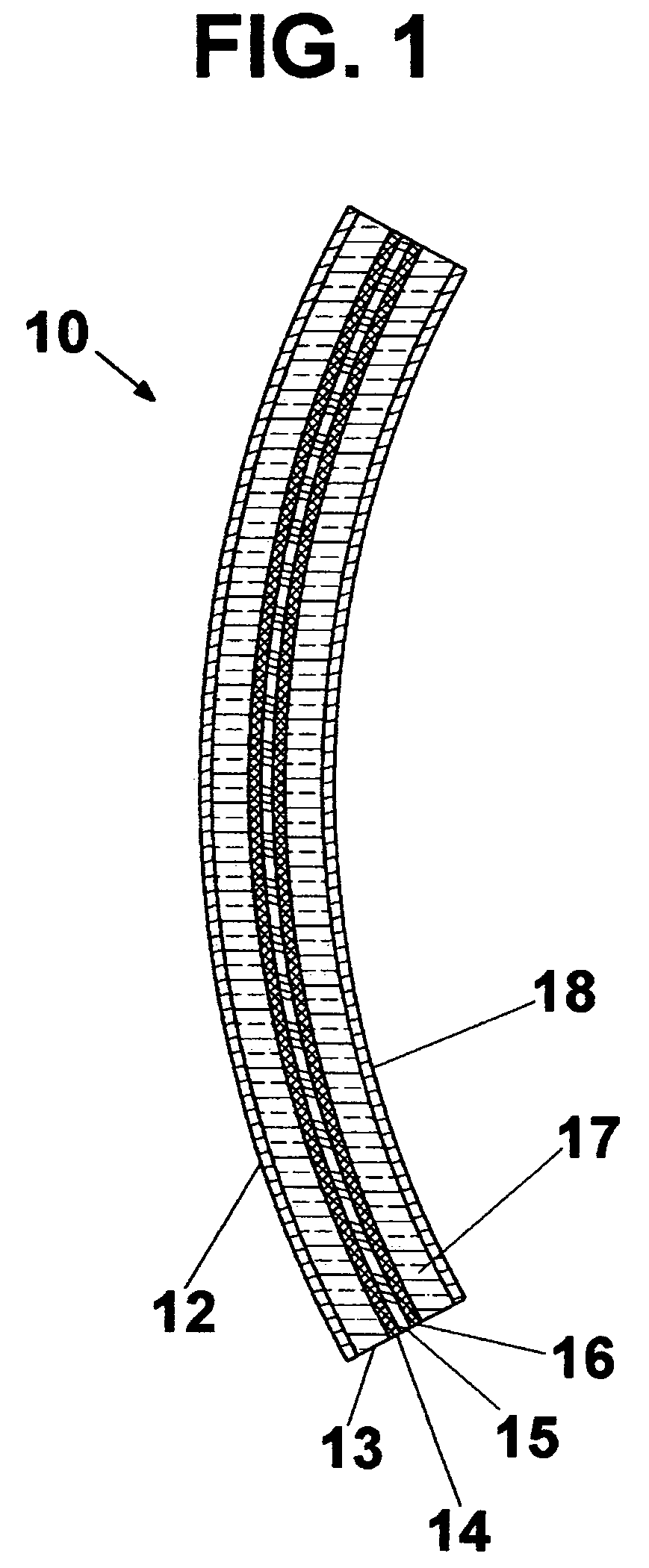Polarized contrast enhancing sunglass lens
a technology of contrast enhancement and sunglass lens, which is applied in the field of polarized sunglass lens, can solve the problems of prior-art polarized lens discoloration or fade, and none of these glass types effectively block ultraviolet light at 1 mm thickness, so as to promote accurate color perception, high light transmittance, and high light transmittance
- Summary
- Abstract
- Description
- Claims
- Application Information
AI Technical Summary
Benefits of technology
Problems solved by technology
Method used
Image
Examples
Embodiment Construction
[0023]FIG. 1 is a cross section view of laminated lens assembly 10 of the preferred embodiment of the invention, depicting polarizing film 15 disposed between two lens elements 13 and 17, with the lamination secured by adhesive layers 14 and 16. Laminated lens assembly 10 also has coatings 12 and 18 applied to the exterior surfaces of lens elements 13 and 17. The methods of manufacturing laminated polarized sunglass lens assemblies are well-known in the sunglass industry and need not be repeated in detail here.
[0024]The specific phrase “luminous transmittance” as used herein refers to the mean light transmittance of an optical lens or filter over a range of visible wavelengths of light as measured and defined within ANSI specification Z80.3-2001. The specific phrase “light transmittance” as used herein refers to transmittance for a single wavelength of light. The term “photochromic” as used herein means the ability to darken when exposed to sunlight. With regard to lens surfaces, th...
PUM
 Login to View More
Login to View More Abstract
Description
Claims
Application Information
 Login to View More
Login to View More - R&D
- Intellectual Property
- Life Sciences
- Materials
- Tech Scout
- Unparalleled Data Quality
- Higher Quality Content
- 60% Fewer Hallucinations
Browse by: Latest US Patents, China's latest patents, Technical Efficacy Thesaurus, Application Domain, Technology Topic, Popular Technical Reports.
© 2025 PatSnap. All rights reserved.Legal|Privacy policy|Modern Slavery Act Transparency Statement|Sitemap|About US| Contact US: help@patsnap.com



